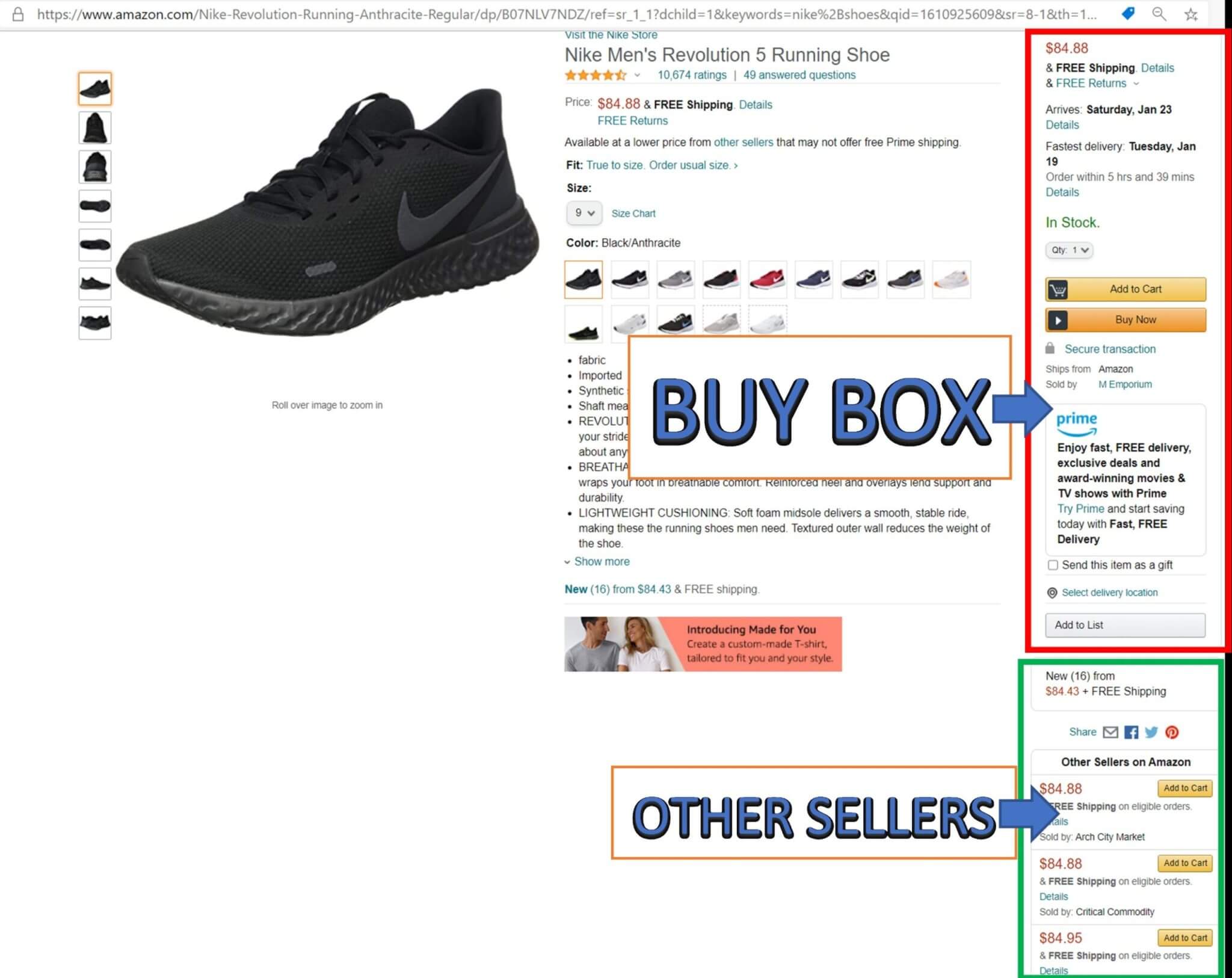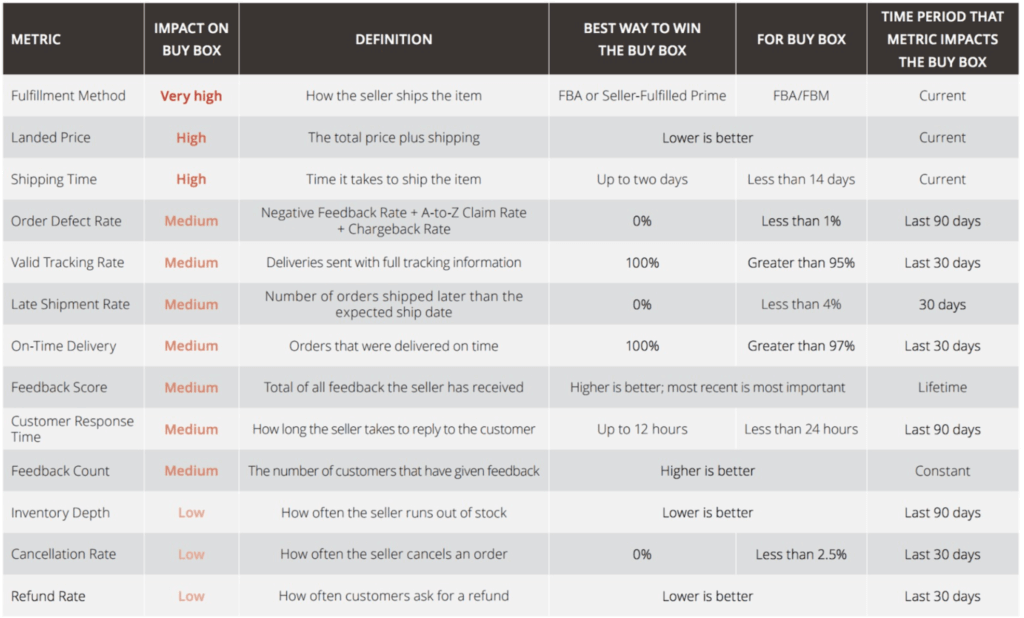Amazon Buy Box refers to the conveniently placed white box on the right side of the Amazon product detail page, where shoppers can add items for purchase to their cart. The “Buy Now” button lets shoppers make an instant purchase right from the product detail page! 
Winning the Amazon Buy Box is basically the ‘moment of truth’ where Amazon Buy Box Algorithm considers variables like excellent ratings & reviews, customer support, FBA, competitive pricing and optimal inventory – and then selects a Seller as the Buy Box winner.
Although the number varies, 82% of Amazon sales happen through the Buy Box, and the percentage is even higher for electronics and mobile purchases.
So, a lot is at stake as most of the action takes place in the Buy Box, which can make or break any seller’s eCommerce strategy. Price is no doubt one of the most important factors but employing a ‘lowest price’ strategy alone does not guarantee to win the Buy Box. Nor does Amazon want its sellers to get into a price war and bleed themselves to an unviable selling adventure.
Buy Box Eligibility:
Although there are several requirements that Amazon tweaks based on their algorithm, here are a few of the minimum criteria needed to be eligible-
- Have a Pro Seller account
- Customer feedback, Guarantee claims, and chargebacks.
- Other seller performance metrics.
- A positive customer shopping experience like Shipping speed, Customer Support.
- Experienced seller on Amazon.
- Competitive Pricing

Keep in mind that being eligible for Buy Box does not guarantee winning it. It just sets up the seller in competition with other equally qualified sellers and lets the Amazon algorithm decide the winner. Of course, Sellers need to regularly update their listings and operations and try to win and maintain the buy box.
We might see multiple sellers winning the buy box for a given product search, depending on the hour of the day. So, keeping an eye on the Buy Box Percentage metric is an excellent way to understand how your product shows up in the Amazon buy box vs. the competition.
Examples: Buy Box Percentage
For a highly competitive category, assume that there 4 good sellers vying for the Buy Box. Analyzing their daily BB % would show that the highest-performing seller was winning the Buy Box in 12 out of the 24 hours with a win percentage of 50%. The other sellers managed to win in 6,3,3 hours with a win percentage of 25%, 12.5%, and 12.5%. All four sellers would have technically “won” the Buy Box.
For Shoppers, Amazon makes sure there is no discernable way the switching of Buy Box winning sellers is evident. Using browser cookies, Amazon ensures that shoppers see only one Buy Box winner each hour.
There is also a scenario where none of the sellers might be winning the Buy Box. If Amazon’s A9 algorithm determines that the same product is sold elsewhere outside of Amazon (Say BestBuy.com, Walmart.com) for a far lesser price, it will perform what is called “Buy Box suppression.” When this happens, shoppers still see the ‘see all buying options” but not the ‘buy box’ – which is Amazon’s way of nudging the seller to price their competitively.
While there are many other reasons for Buy Box Suppression, pricing products higher than MSRP runs them afoul of the Amazon pricing algorithm. This is when utilizing a repricing tool becomes necessary to regularly track and update pricing rules when competitors’ price drops are significant.
Perhaps, next time you browse the Amazon webpage or the app for your latest obsession list, spare a thought for the intense planning and competition that goes into winning the Buy Box or not!


Comments are closed.